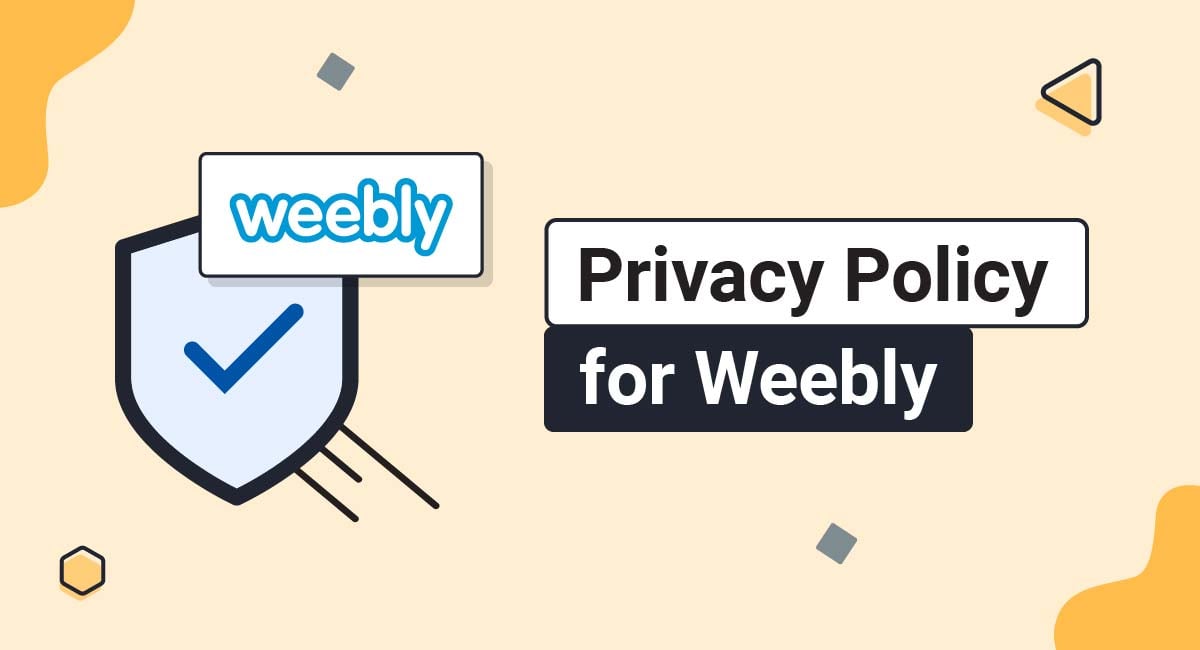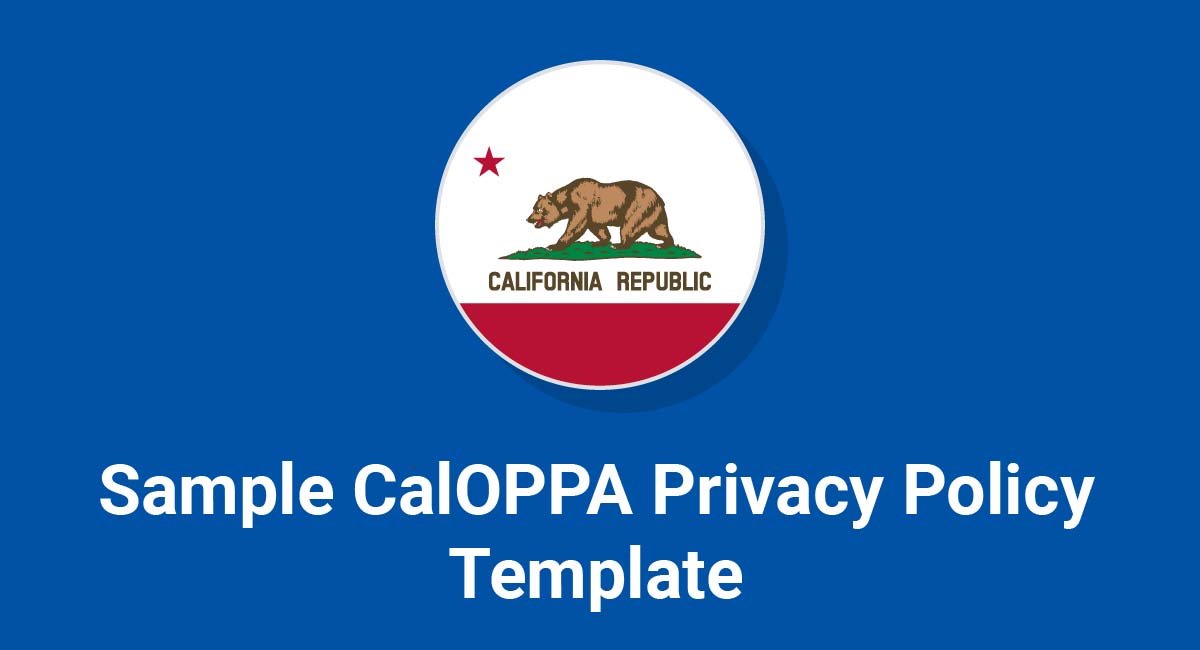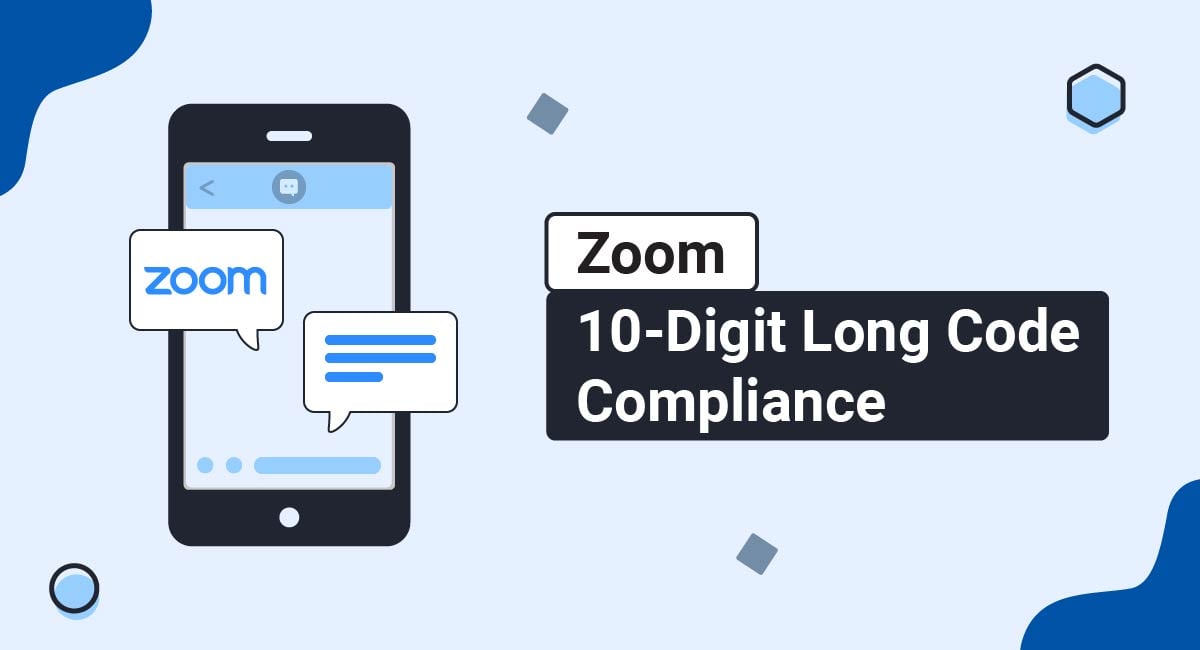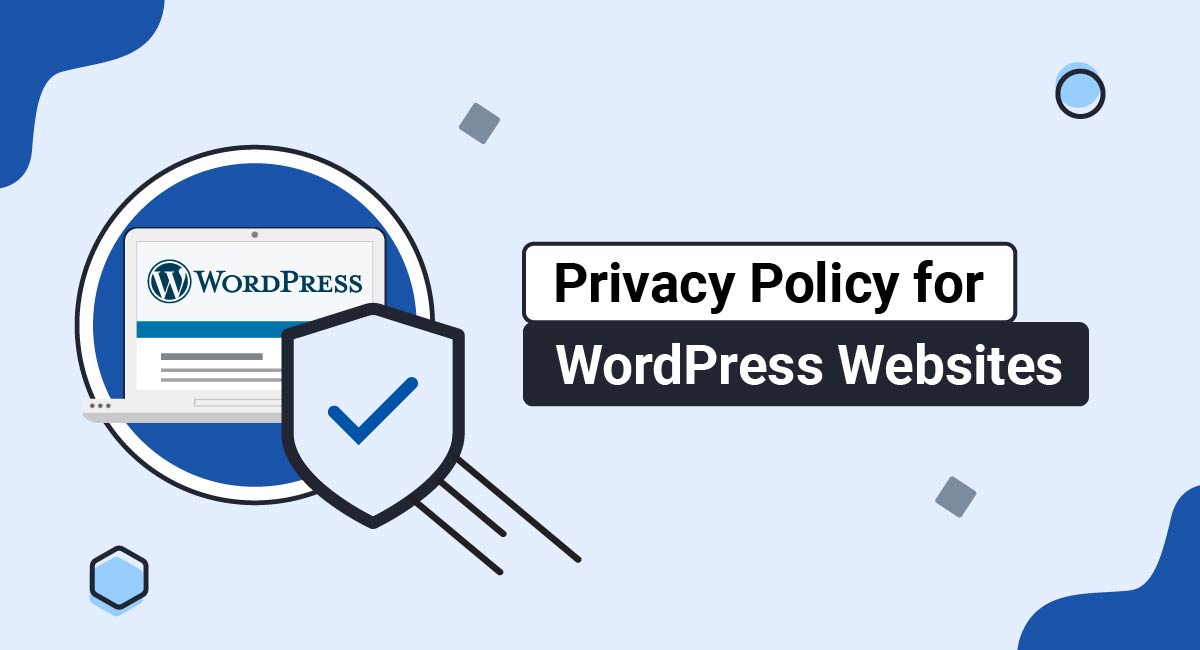If you operate a Weebly website, you'll likely require a Privacy Policy. This is due to the fact that if your website collects any personal data, privacy regulations mandate a Privacy Policy, and Weebly requires that you comply with applicable laws when using its platform.
This article will explain why a Privacy Policy is necessary for Weebly websites, how to fulfill Privacy Policy requirements, how to draft a Privacy Policy for your Weebly site, and how to display and obtain consent to your Privacy Policy once it's been created.
Our Privacy Policy Generator makes it easy to create a Privacy Policy for your business. Just follow these steps:
-
At Step 1, select the Website option or App option or both.

-
Answer some questions about your website or app.

-
Answer some questions about your business.

-
Enter the email address where you'd like the Privacy Policy delivered and click "Generate."

You'll be able to instantly access and download your new Privacy Policy.
- 1. Why a Privacy Policy is Required for Weebly Websites
- 1.1. Weebly's Terms of Service Requires Following the Law
- 1.2. Global Privacy Laws Require a Privacy Policy
- 1.2.1. U.S. CalOPPA
- 1.2.2. U.S. CCPA (CPRA)
- 1.2.3. The EU's GDPR
- 1.2.4. The UK's DPA Act
- 1.2.5. Australia's Privacy Act of 1988
- 1.2.6. Canada's PIPEDA
- 2. How to Create a Privacy Policy for Weebly Websites
- 2.1. What Personal Data You Collect
- 2.2. How You Collect Information
- 2.3. Who You Share Personal Data With
- 2.4. How You Use the Information You Collect
- 2.5. How You Keep the Information You Collect Safe
- 2.6. How Users Can Access or Delete Their Personal Information
- 2.7. Your Contact Information
- 3. How to Add a Privacy Policy Page to a Weebly Website
- 4. How to Get Agreement to Your Weebly Website's Privacy Policy
- 5. Summary
Why a Privacy Policy is Required for Weebly Websites
A Privacy Policy is required for Weebly websites because global privacy laws require a Privacy Policy, and Weebly's Terms of Service requires that all users of its platform follow applicable laws.
Let's look more at this requirement.
Weebly's Terms of Service Requires Following the Law
Weebly's Terms of Service requires compliance with state and international privacy regulations when using its services:
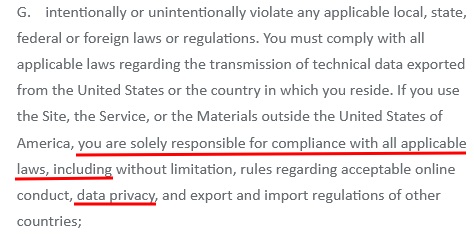
To remain compliant with Weebly's Terms of Service, it's important to be aware of privacy laws that impact your business or protect your users' privacy.
A number of privacy laws require a Privacy Policy on websites that collect personal information from users.
Global Privacy Laws Require a Privacy Policy
If your Weebly website collects personal information, you're legally required to provide a Privacy Policy.
Personal information includes data such as:
- Names
- Addresses
- Financial payment information
- Drivers licenses
- State ID numbers
- Exact geolocation
- User credentials
- Passport information
- Social Security Numbers
Below, we'll briefly discuss the privacy laws most likely to impact your business and provide you with key details with which you should be familiar.
U.S. CalOPPA
The California Online Privacy Protection Act (CalOPPA) is a law that requires websites and online services to have a clear and conspicuous Privacy Policy. This policy must be easily accessible to users and provide information about the data being collected, how it's used, and who it's shared with.
CalOPPA applies to any company that operates a website or online service that targets California residents, regardless of where the company is located. By having a Privacy Policy that complies with CalOPPA, businesses can help protect the personal information of California residents and build trust with their customers.
U.S. CCPA (CPRA)
The California Consumer Privacy Act (CCPA) was brought into force on January 1, 2020, and mandates companies to revise their Privacy Policies to be clear about the selling or sharing of personal information, as well as user rights.
If a company sells personal information, the Privacy Policy must also inform consumers of their right to opt out of data collection and processing by the company.
The California Privacy Rights Act (CPRA) expands the CCPA. It became effective on January 1, 2023. The CPRA broadens the CCPA's restrictions on using and disclosing personal information to include sensitive personal data, which must be stated in a Privacy Policy.
The CPRA adds contractors to the organizations bound by its rules and requires them, along with businesses, service providers, and third parties, to comply with the same obligations as the CCPA. Companies are mandated only to gather personal information necessary for conducting business.
The EU's GDPR
The EU's General Data Protection Regulation (GDPR) mandates that businesses be transparent about their data processing practices by offering precise and accurate information on how they collect, use, and share personal data, which is usually outlined in a Privacy Policy.
This law aims to give individuals more control over their personal data and increase transparency in handling it. Websites operating within the EU or targeting EU citizens must comply with this law.
The UK's DPA Act
The UK's Data Protection Act (DPA) mandates that websites must have a comprehensive Privacy Policy to explain how a user's personal information is collected, used, and safeguarded. Additionally, the DPA grants individuals the right to access and correct personal data.
Australia's Privacy Act of 1988
The Privacy Act imposes 13 guidelines that must be adhered to by all parties subject to the act. These guidelines secure the fair collection and usage of personal information, ensure its protection, and inform users of their privacy rights and the means to exercise them.
Transparency and openness toward users regarding the collected information and its usage is a requirement. This entails clearly stating the methods of information collection, the reason for it, its usage, the means for users to correct the information, and any potential overseas disclosures.
Having a Privacy Policy that includes these details on your Weebly website can fulfill the legal requirements of the act.
Canada's PIPEDA
To ensure transparency in data collection, businesses are required by PIPEDA (Personal Information Protection and Electronic Documents Act) to provide customers with information in an easily understandable format, such as through a Privacy Policy.
How to Create a Privacy Policy for Weebly Websites

When drafting your Privacy Policy, it's crucial to use simple language that is easy for the general public to understand. Avoid using legal or technical terms.
To ensure legal compliance, make sure your Privacy Policy includes essential clauses such as the type of personal information you collect and how you use it. It should also detail your process of gathering information, the information you share, and the measures you take for security. It should also provide a method for users to contact you and manage their personal information.
Let's go over the process of writing some of these crucial clauses.
What Personal Data You Collect
It's crucial to clearly inform users that you collect their personal information, either directly through sales or contact forms - or indirectly via third-party tracking services.
For maximum legal compliance and transparency, provide as much specificity and detail as possible.
Here's how the Toppling Goliath Brewing Company, an eCommerce company that uses the Weebly platform, provides this information:
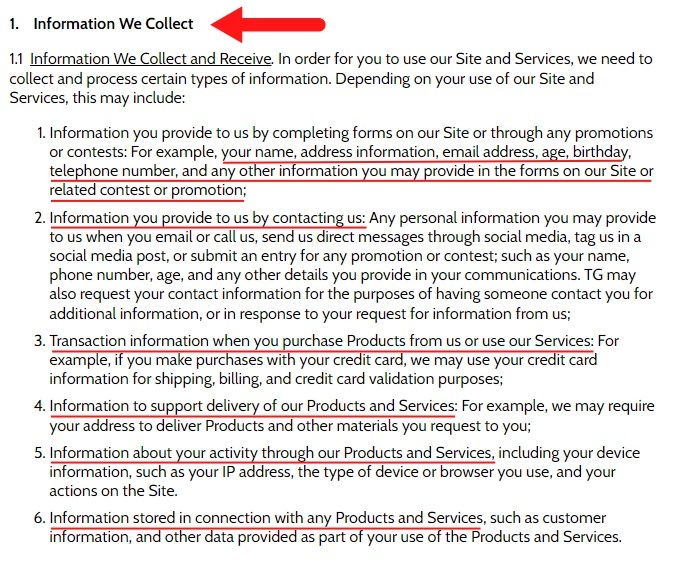
How You Collect Information
Your Privacy Policy should detail your methods for collecting user information, whether obtained directly or indirectly and if explicit consent for collection is required from users.
Here's an example from another eCommerce Weebly website called Eyeconic:
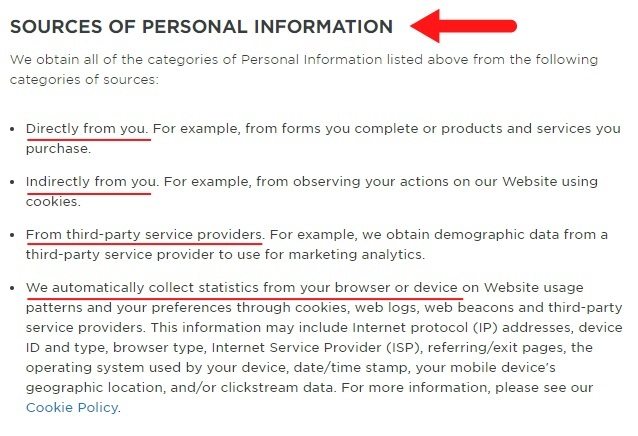
Who You Share Personal Data With
Your Privacy Policy should include a segment that informs users about whether you share their personal information with any third parties and provides a general category of those entities.
Kellyco, for example, does not sell or share personal information with third party marketing or advertising firms. Here's how the company relays that information:

How You Use the Information You Collect
Your Privacy Policy should explain the reasons for collecting the information you gather.
As per privacy regulations, it's crucial to only collect the information that is essential for your business operations. This necessitates disclosing how the data is utilized to guarantee that there's no excessive collection without a valid reason.
Radley goes the extra mile when it comes to transparency, as can be seen in the image below:
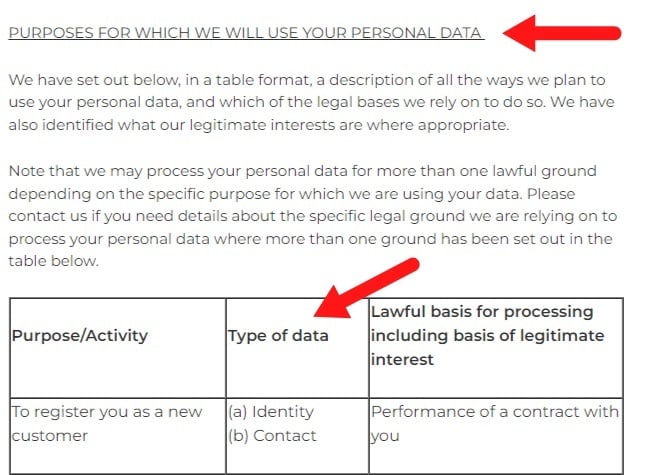
How You Keep the Information You Collect Safe
Ensure that your Privacy Policy covers the measures taken to secure users' personal information.
Sourcebooks, another Weebly website, informs users about its security practices like this:

How Users Can Access or Delete Their Personal Information
Privacy laws often demand that the Privacy Policy inform users about their right to access and modify their personal information and other rights.
Here's an example of how you can present this information:
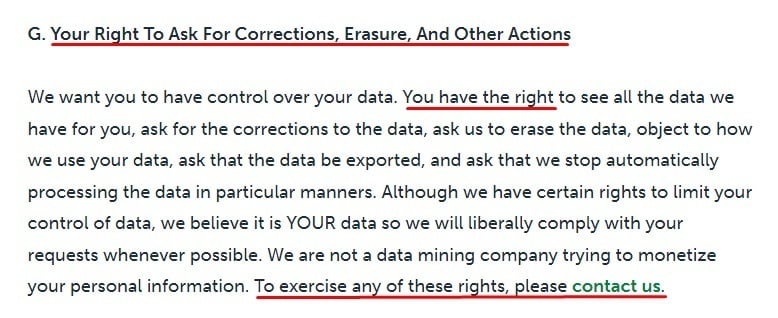
Your Contact Information
Ensure that your Privacy Policy includes at least one method for users to contact you.
Here's how Geocaching presents a variety of methods of contact. The more, the better:
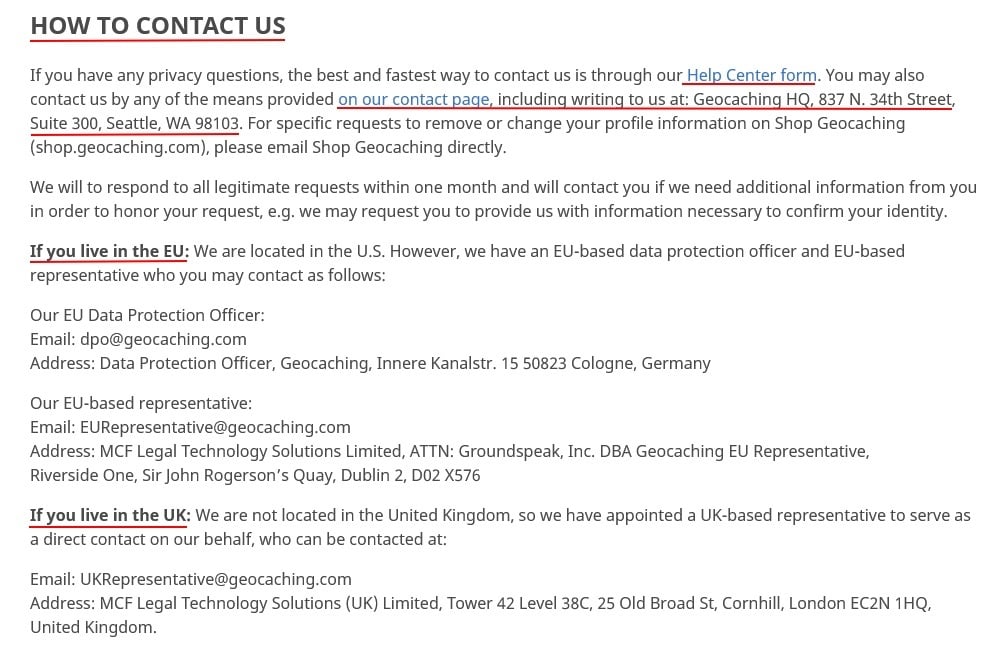
Once you have drafted a Privacy Policy, it's time to publish it on your Weebly website. To begin with, you need to create a separate page on Weebly to host the policy.
How to Add a Privacy Policy Page to a Weebly Website
Follow these simple steps to add a page for your Privacy Policy to your Weebly website. You can download these instructions as PDF file.
-
Log in to the Weebly account.
-
In the Dashboard, go to Website > Edit Site and click on Edit:
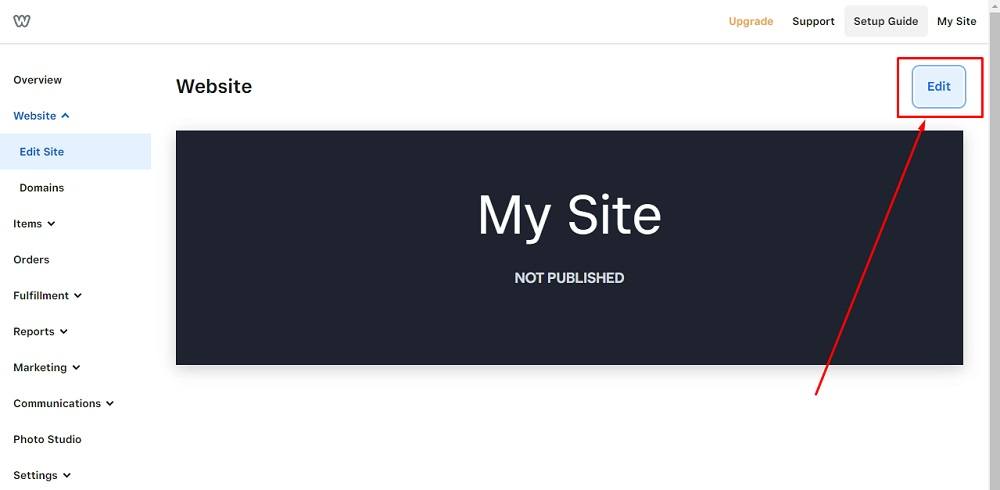
-
When the Website Builder opens, go to Pages in the header menu:
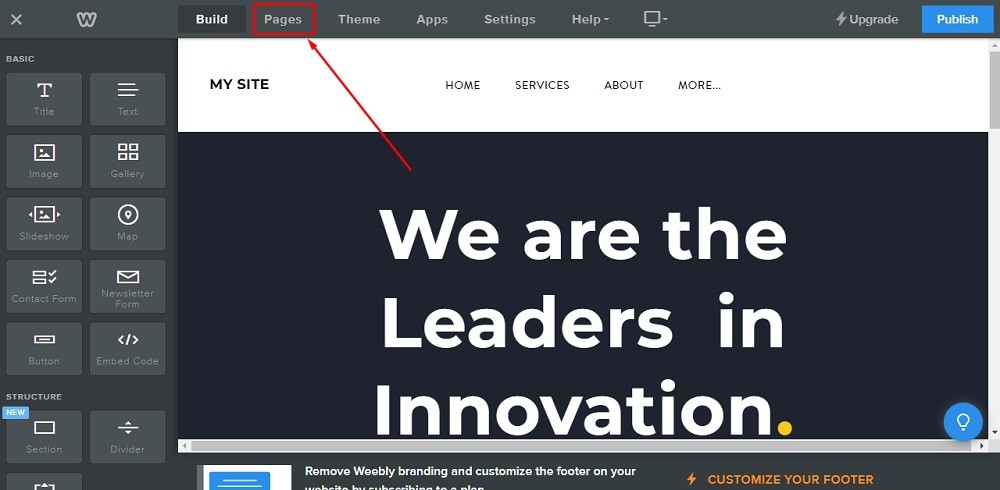
-
Next to the Pages menu, click the + icon to add a new page:
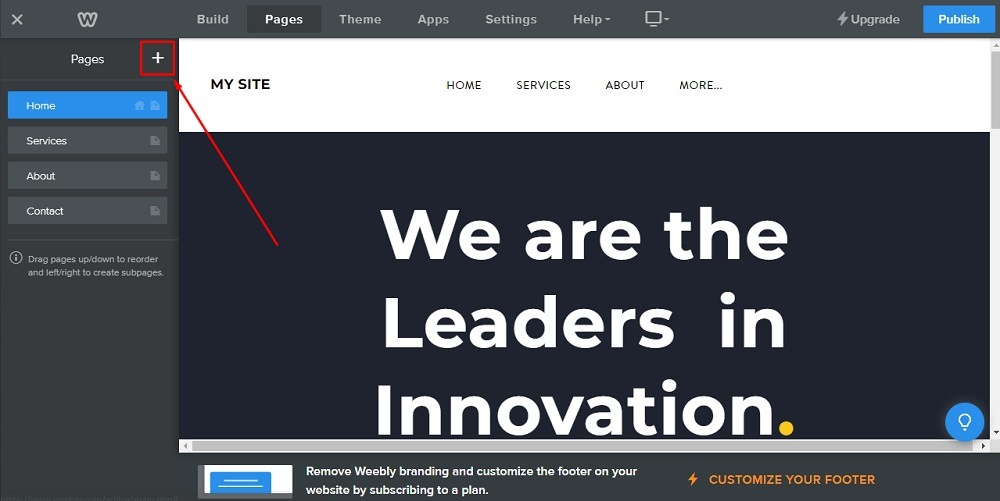
-
The Pages menu will open. Go to Standard Page to add a new standard page:
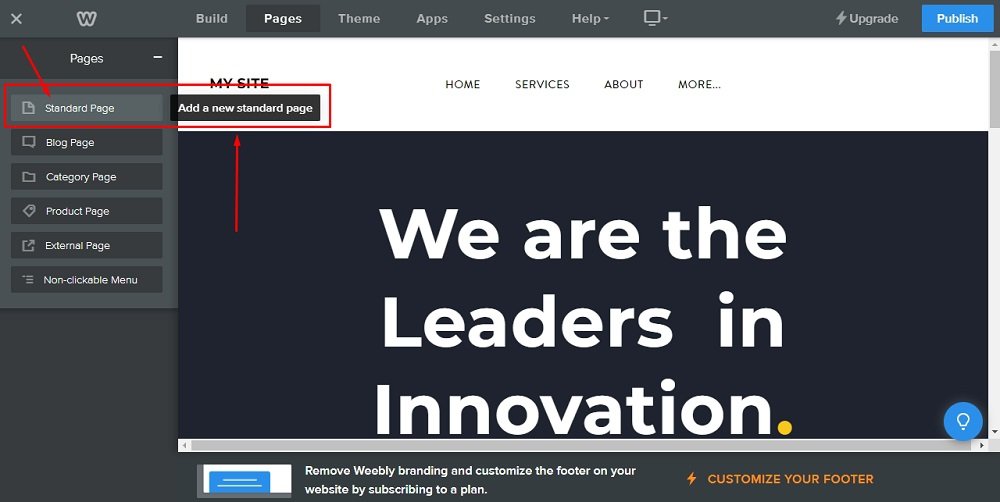
-
Name your new page "Privacy Policy" and check the Hide in Navigation option. Click Done:
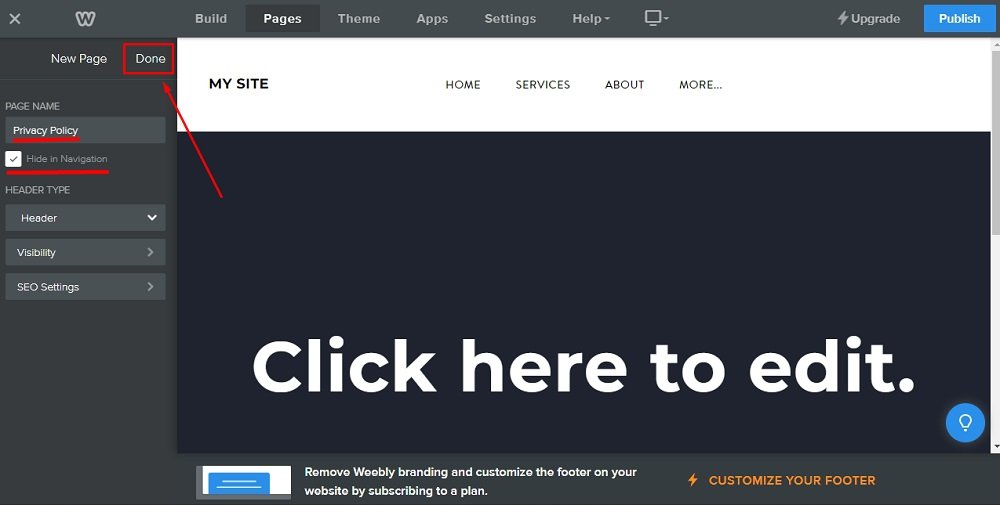
-
Now on the page itself, on the right, type "Privacy Policy" in the page title field:
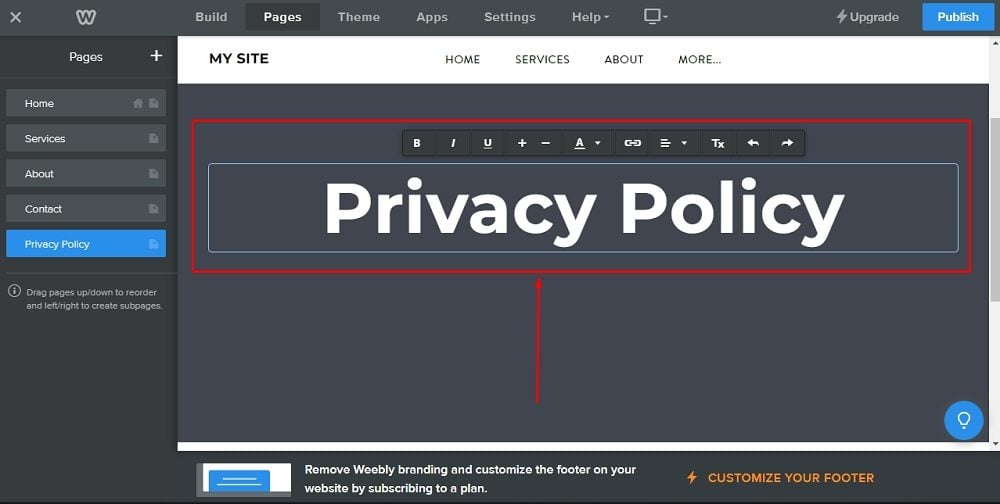
-
To add elements on the page, go to the Build option in the header menu:
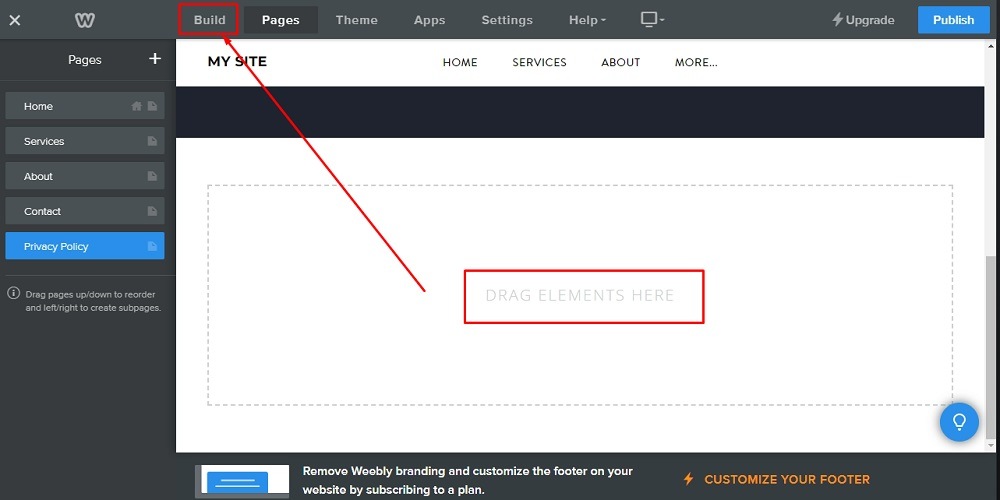
-
From the Basic menu, select Embed code:
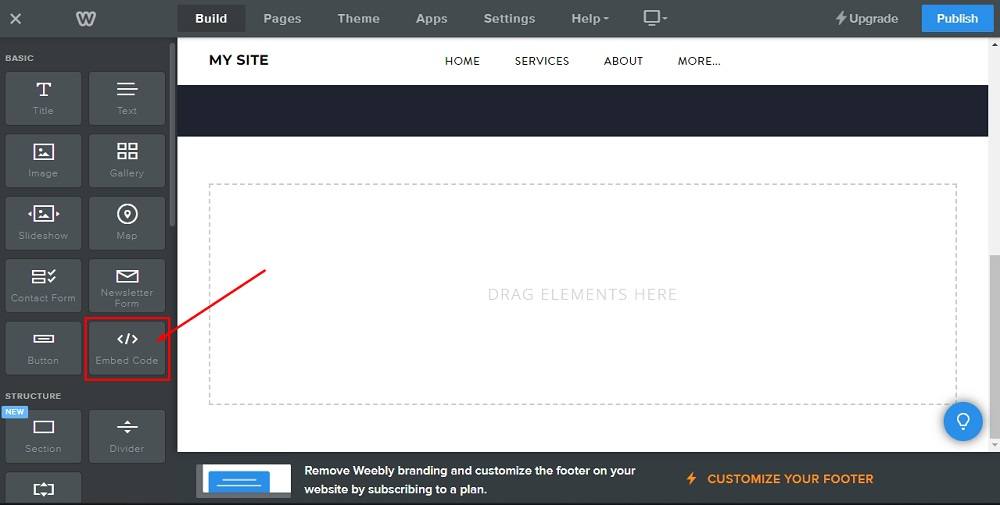
-
Then just drag and drop it on the page:
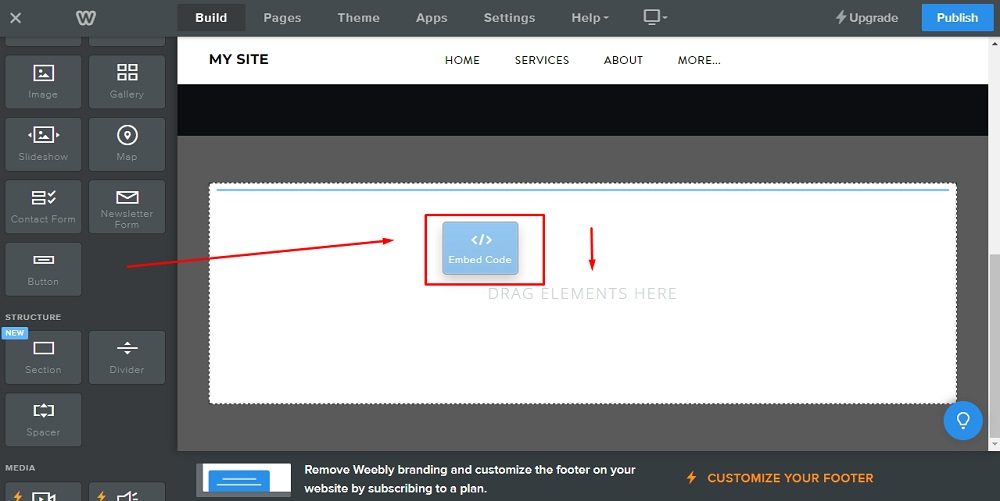
-
Click to set custom HTML:
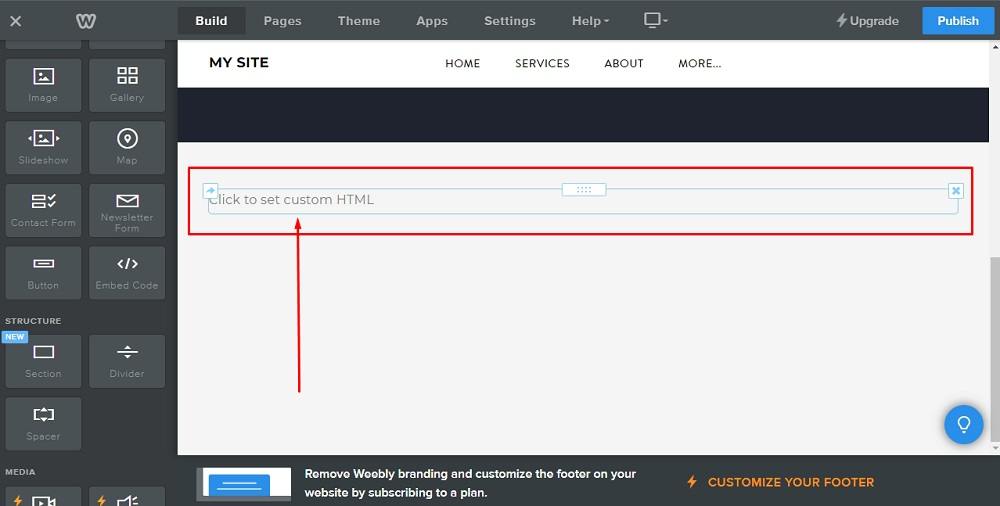
-
The Edit custom HTML option will show:
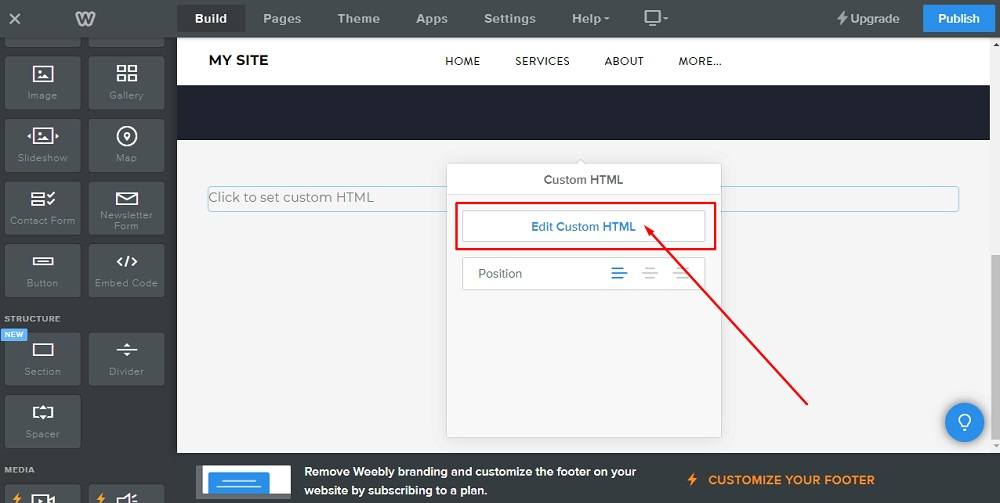
-
"Add your custom HTML code" will appear:
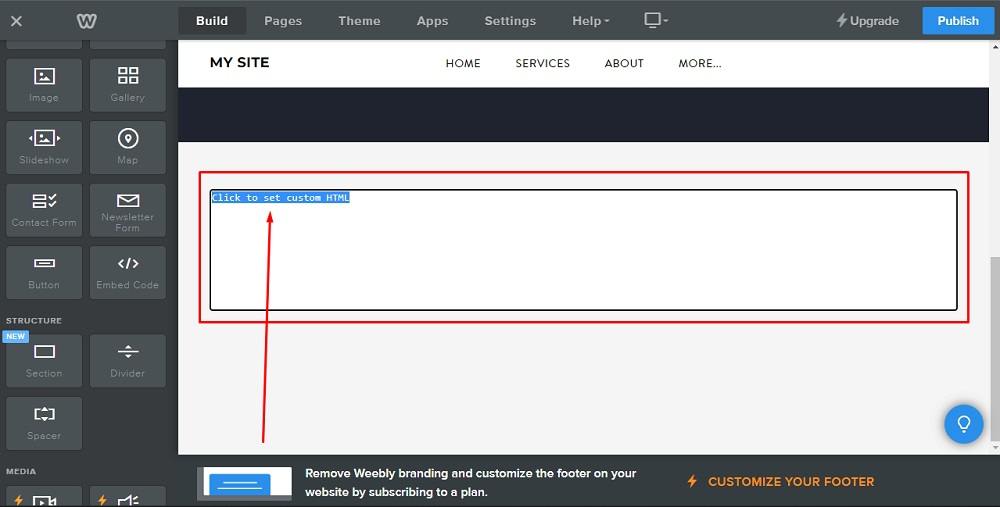
-
Now you need to add text to your Privacy Policy page.
If you do not have a Privacy Policy, you can use our Privacy Policy Generator and create it within minutes.
-
Once you have the Privacy Policy created by TermsFeed, let's get the policy text. Under the Copy your Privacy Policy section, click on Copy this to clipboard:
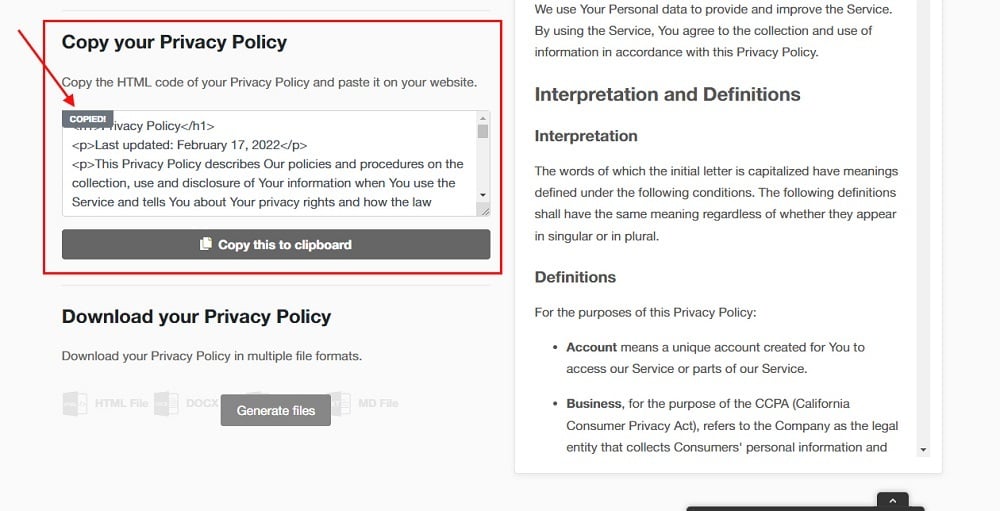
-
Go back to Weebly and paste the HTML code:
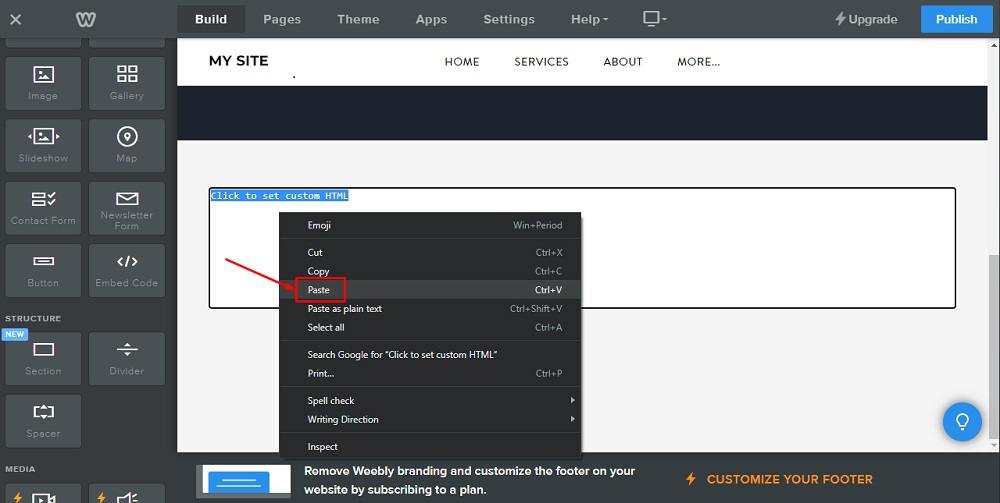
-
You're done.
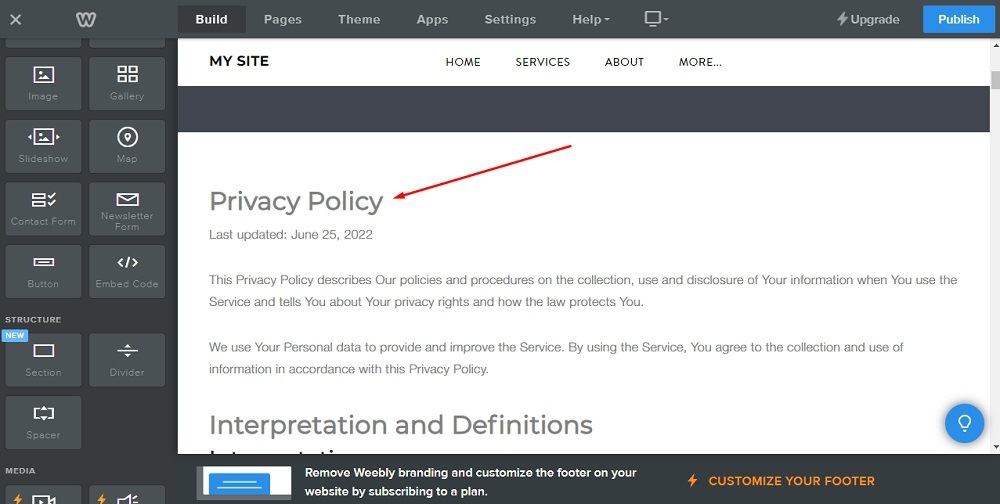
Your Privacy Policy is only legally enforceable if you get users to agree to it. Here's how you can go about getting the most legally compliant agreement.
How to Get Agreement to Your Weebly Website's Privacy Policy

A straightforward method to obtain consent from users is to have an "I Agree" type of checkbox that must be ticked when creating an account or accessing your site. The checkbox should be situated close to a statement that explicitly explains that ticking the box signifies the user's agreement with the Privacy Policy.
An "I Agree" checkbox or a similar alternative is the most widely used and efficient approach.
Here's an example of such a checkbox in action:
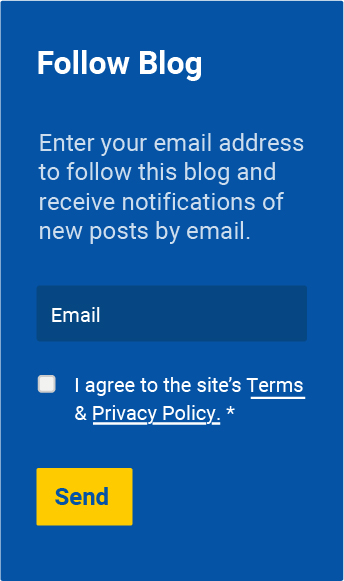
Here's how you can request consent to your Privacy Policy when users sign up for an account with you:
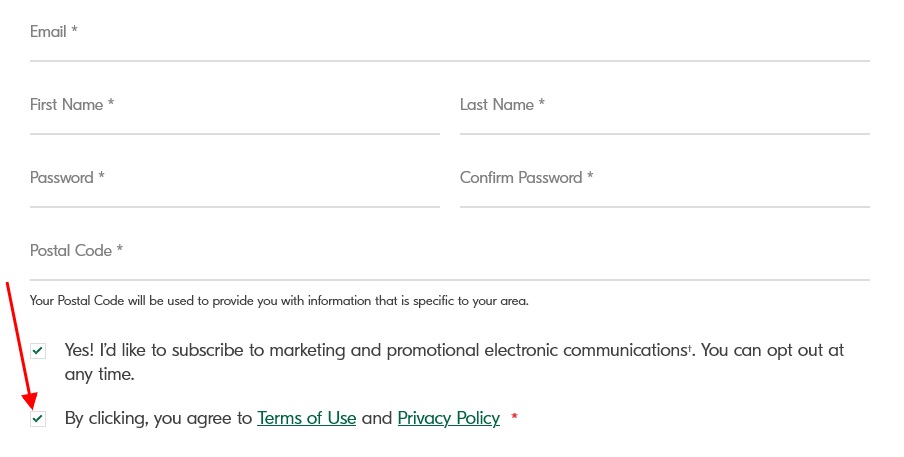
And one more, just to demonstrate how easy yet effective an "I Agree" checkbox is for getting consent:
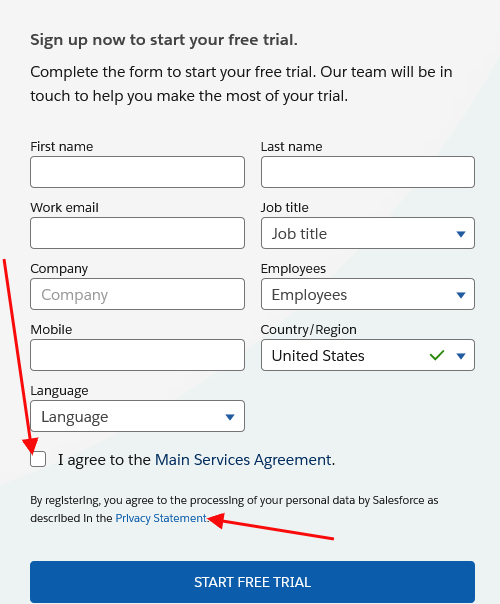
Summary
Weebly's Terms require businesses to follow all applicable laws. That includes international and state privacy laws, which mandate the use of Privacy Policies.
Your Privacy Policy should be written in clear, easy-to-understand language and include information on the following:
- What information is collected
- How information is collected
- Who the information is shared with
- How the information is used
- An assurance that security measures are in place
- User rights
- Your contact information
Make your Privacy Policy easily accessible by displaying it in a prominent location, such as the website footer or checkout/account login pages.
Implementing an "I Agree" checkbox requiring users to agree to your Privacy Policy terms before accessing your site or signing up for an account can ensure that users have read and understood your policy, and are consenting to your practices.

Comprehensive compliance starts with a Privacy Policy.
Comply with the law with our agreements, policies, and consent banners. Everything is included.
